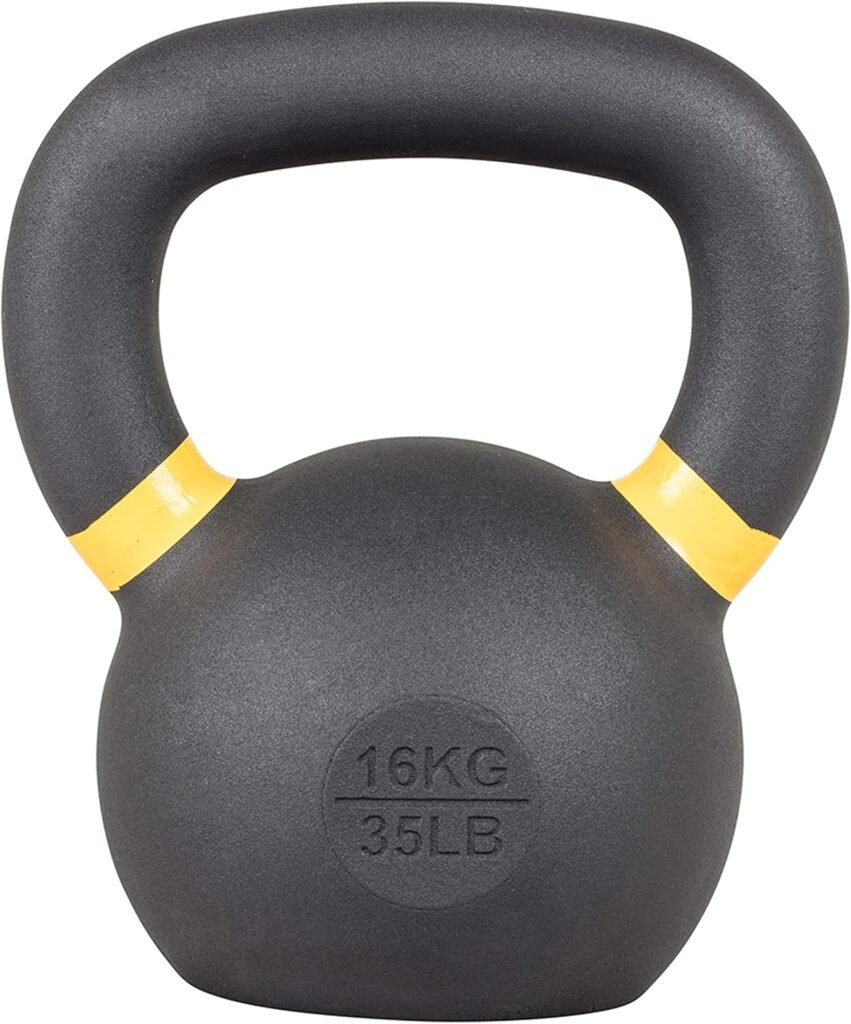Have you ever wondered which type of strength training equipment might be better for your workouts—kettlebells or barbells? Both have their unique benefits, and choosing between them can be a bit confusing. Let’s unpack the differences between kettlebell and barbell training to help you understand which one might be a better fit for your fitness journey.

Understanding Kettlebell Training
Kettlebells are becoming increasingly popular in fitness circles, and for good reason. Their unique design—a spherical weight with a handle—allows for a range of dynamic movements that can enhance strength, endurance, and flexibility.
The Mechanics of Kettlebells
Kettlebell training involves both strength-training and cardiovascular workouts. The way kettlebells are utilized often incorporates explosive movements, which can engage multiple muscle groups and boost your heart rate. This can make your workouts not only effective but also fun and varied.
Benefits of Kettlebell Training
Versatility: Kettlebells can be used for a variety of exercises, including swings, snatches, and Turkish get-ups, allowing for a more extensive workout experience.
Functional Strength: They improve your functional strength, meaning you’re likely to see carryover benefits to daily activities. This is particularly useful if you’re looking to enhance overall fitness.
Core Engagement: Many kettlebell movements require significant core stability, which improves your balance and strengthens mid-line muscles.
Improved Mobility: The dynamic movements can also enhance your flexibility and mobility, as many exercises require a full range of motion.
Cardio Benefits: High-rep kettlebell workouts can serve as a great way to improve your cardiovascular fitness.
Exploring Barbell Training
Barbells, classic tools found in most gyms, are synonymous with strength training. They consist of a long metal bar that holds weights on either end, designed for lifting heavy loads. This traditional training method offers a different set of advantages.
The Mechanics of Barbells
Barbell training generally focuses on building maximum strength, as you can load them with substantial weights. Movements like squats, deadlifts, and bench presses are staples in many workout regimes and target specific muscle groups effectively.
Benefits of Barbell Training
Heavy Lifting: Barbells allow for heavy loading, which is beneficial for strength gains. This is especially true for compound movements that work multiple muscle groups simultaneously.
Progressive Overload: They make it easier to track weight progress and incrementally increase your loads, a crucial aspect of building strength.
Stability: Barbells provide a stable, balanced feel when lifting, making it easier to control heavier weights compared to kettlebells.
Isolation Movements: Many exercises can isolate specific muscles, which may be beneficial if you’re looking to target particular areas for growth.
Wide Range of Exercises: Though heavy focus is placed on powerlifting and bodybuilding, barbells can also be used for athletic training, conditioning, and Olympic lifting.
You are currently viewing a placeholder content from YouTube. To access the actual content, click the button below. Please note that doing so will share data with third-party providers.
More InformationComparing Kettlebell and Barbell Training
When it comes to kettlebell and barbell training, it’s important to evaluate how each aligns with your fitness goals. Here’s a way to think about their differences:
| Aspect | Kettlebell Training | Barbell Training |
|---|---|---|
| Type of Strength | Functional, dynamic, core-focused | Maximal strength, power-oriented |
| Weight Load | Generally lighter; adjustable | Heavy loading is possible |
| Movement Type | Explosive and varied | Primarily fixed and linear movements |
| Skill Level | Can require more technique for swings | Generally needs basic form knowledge |
| Mobility | Enhances flexibility and mobility | Focused on strength, less on mobility |
Targeting Specific Goals
The best choice often boils down to your individual goals. If you’re aiming for overall fitness and dynamic movements, kettlebells might be the way to go. If building sheer strength is your priority, barbells can help you achieve that effectively.
Skill Level and Learning Curve
When you introduce a new training system to your regimen, the skill levels associated with each tool play a role in deciding which is right for you.
Kettlebells: More Technical?
Kettlebells often require a bit of a learning curve. Movements can be explosive and demand precise technique, particularly with swings and snatches. This can lead to a greater focus on form and body mechanics, which is beneficial long-term but may take time to master.
Barbells: A More Conventional Approach
Barbell exercises like squats and bench presses tend to have simpler mechanics, making them easier to learn for beginners. However, pushing heavier weights requires proper technique and safety measures. This may necessitate supervision or guidance from a knowledgeable trainer.
Incorporating Both into Your Routine
If you’re still unsure which tool is right for you, consider incorporating both into your training program! Each has its unique advantages, and utilizing a combination can lead to a well-rounded fitness routine.
Creating a Balanced Workout
Combining kettlebell and barbell training allows you to exploit the benefits of both, making your workouts more dynamic and comprehensive. Here’s an example weekly schedule:
| Day | Kettlebell Focus | Barbell Focus |
|---|---|---|
| Monday | Kettlebell swings, goblet squats | Bench press, barbell rows |
| Wednesday | Turkish get-ups, kettlebell snatches | Deadlifts, overhead press |
| Friday | Kettlebell cleans, lunges | Back squats, front squats |
Transitioning Mid-Workout
You could even combine them in a single workout session. For instance, you could start with heavy barbell lifts to focus on strength and then transition to kettlebell exercises to elevate your heart rate and improve endurance.
Case Studies: Real-life Applications
To better understand the effectiveness of kettlebell versus barbell training, let’s look at a couple of case studies that highlight their applications.
Case Study 1: A Recreational Athlete
Consider a recreational athlete looking to enhance their overall fitness and stamina. They discover kettlebell training integrates well with their activities. By performing kettlebell swings and snatches, they improve not only their strength but also their explosive power, helping their performance in sports.
Case Study 2: A Bodybuilder
On the other hand, a bodybuilder focused more on hypertrophy and gaining muscle finds traditional barbell exercises, like bench presses and deadlifts, to be a more efficient approach. This allows them to progressively overload their muscles, leading to significant growth over time.

Safety Considerations
With any type of strength training, safety should always be a priority.
Kettlebell Safety
When using kettlebells, always focus on form and alignment. Because kettlebells demand more coordination and balance, you may want to start with lighter weights. Take the time to practice your swings and other movements to minimize the risk of injury.
Barbell Safety
For barbells, using proper equipment is crucial. Always use a squat rack for heavy lifts and consider employing techniques like a spotter or safety bars for max efforts. Proper alignment is essential to avoid stress on joints and potential injuries.
The Ideal Training Environment
The setting in which you train can heavily influence your experience with kettlebell or barbell training.
Kettlebell-friendly Spaces
Kettlebells can be advantageous in small spaces because they require less setup and can be used for quick workouts almost anywhere. They are often seen in home gyms or group classes.
Barbell-friendly Gyms
Barbell training usually requires a more specialized environment, often found in traditional gyms. However, this equipment is essential for serious strength trainers and bodybuilders, allowing for heavier lifting.
Conclusion: Choosing the Right Tool for You
Ultimately, deciding between kettlebell and barbell training boils down to understanding your personal fitness goals, preferences, and the resources available to you. Kettlebells offer versatility and dynamic workouts, while barbells facilitate heavy lifting and muscle growth.
Whether you choose one or both, incorporating strength training into your routine is a fantastic way to improve your overall health and well-being. You will engage your muscles, boost your cardiovascular health, and enhance your functional fitness through whatever method resonates with you.
So, which path are you thinking about taking: the explosive world of kettlebells or the traditional strength training of barbells? Whichever you choose, remember: consistency is key! Happy training!






